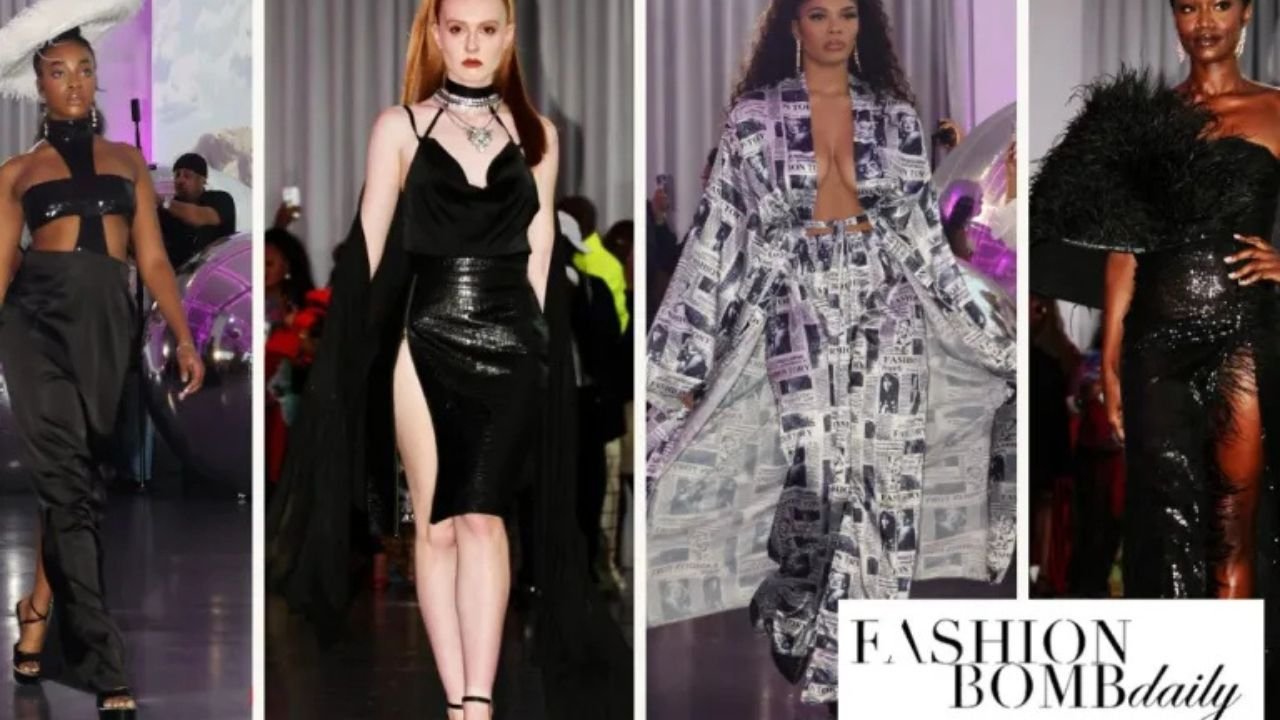Introduction
In the ever-evolving world of fashion and lifestyle publications, few magazines have managed to carve out a unique identity that resonates across generations. Among these, Suede Magazine stands out as a pioneering platform that celebrated style, culture, and individuality with a distinctive voice and aesthetic. Launched in the early 2000s, Suede became more than just a magazine; it was a cultural movement that captured the zeitgeist of the early 21st century, especially within urban and youth subcultures.
As we reflect on its legacy, The Fashion Bomb takes a nostalgic journey into the history of Suede Magazine, exploring its origins, editorial ethos, key contributors, cultural impact, and lasting influence on fashion media.
The Origins of Suede Magazine
The Cultural Context
The late 1990s and early 2000s were a dynamic period for fashion and youth culture. The rise of hip-hop, streetwear, and indie fashion brands signaled a shift toward more authentic, diverse expressions of style. Magazines like The Source, Complex, and Hypebeast began to redefine what fashion media could be—more inclusive, culturally relevant, and rooted in real-life style.
Amidst this landscape, a new publication emerged in 2003: Suede Magazine. Founded by a group of young creatives passionate about urban culture, music, and fashion, Suede aimed to provide a platform that showcased style from the streets to the runway, emphasizing individuality and authenticity.
Founding Principles
Suede’s founders envisioned a magazine that:
- Celebrated diverse expressions of style across different communities.
- Merged fashion with music, art, and lifestyle.
- Delivered high-quality visuals and editorial content with a raw yet sophisticated aesthetic.
- Supported emerging designers, artists, and photographers.
The name “Suede” symbolized luxury intertwined with streetwear sensibilities, evoking textures of sophistication and rebellion. It was a perfect metaphor for the magazine’s ethos: blending elegance with edge.
Editorial Ethos and Visual Identity
The Aesthetic
Suede Magazine distinguished itself through its gritty yet polished visual style. The photography often combined candid street shots with high-fashion editorial shoots, blurring the lines between the raw and the refined. Its use of natural lighting, urban backdrops, and diverse models reflected its commitment to authenticity.
The magazine’s layout favored bold typography, layered imagery, and minimalistic design that allowed the content to stand out without overwhelming the reader. This aesthetic resonated with a generation seeking realness but also aspirational style.
Content and Themes
Suede’s editorial content covered a broad spectrum:
- Fashion Editorials: Showcasing streetwear brands, independent designers, and international fashion scenes.
- Music and Culture: Profiles of hip-hop artists, DJs, and cultural icons shaping style.
- Art and Photography: Features on emerging artists and innovative photographers.
- Profiles and Interviews: In-depth conversations with influencers, musicians, and creatives.
- Lifestyle and Travel: Highlighting global street style scenes, nightlife, and cultural hotspots.
By weaving these themes together, Suede created a rich tapestry that appealed to a youthful, style-conscious audience eager to discover and define their identity.
Key Contributors and Collaborators
Editors and Creative Directors
The success of Suede hinged on visionary editors and creative minds who understood the pulse of urban youth culture. Notable figures include:
- Marcus Allen (Editor-in-Chief): Known for his keen eye for emerging talent and authentic storytelling.
- Jasmine Lee (Creative Director): Brought a bold visual style that combined street aesthetics with high fashion.
- Photographers: Including names like David LaChapelle, Taysha Murtaugh, and local street shooters who captured the essence of city life.
Influential Collaborators
Suede frequently collaborated with:
- Independent designers and brands: Such as Stüssy, Bape, and local streetwear labels.
- Musicians and artists: Featured hip-hop legends, indie bands, and visual artists.
- Models and influencers: From established supermodels to rising social media personalities.
These collaborations contributed to the magazine’s reputation as a tastemaker and cultural curator.
The Cultural Impact of Suede Magazine
Amplifying Streetwear and Urban Fashion
Suede played a pivotal role in elevating streetwear from niche to mainstream. By consistently featuring brands like Supreme, Off-White, and local urban labels, it helped legitimize street fashion as an influential style movement.
Its editorial spreads often highlighted how streetwear could be seamlessly integrated into high fashion, inspiring collaborations and collections from major brands.
Supporting Diversity and Inclusion
From its inception, Suede championed diversity. It showcased models of various ethnicities, body types, and backgrounds, challenging conventional beauty standards prevalent in fashion magazines. This approach resonated with a generation eager for representation and authenticity.
Bridging Cultures
Suede’s international coverage connected urban scenes across cities like New York, London, Tokyo, and Paris. It celebrated local styles and cultural nuances, fostering a global community of style enthusiasts.
Influencing Fashion Media
Many modern fashion publications and online platforms cite Suede as an inspiration for their own inclusive, culturally rich content. Its blend of street culture and high fashion set a template that many follow today.
The Decline and Transition
Challenges in the Digital Age
Like many print publications, Suede faced challenges with the rise of digital media. The proliferation of social media platforms, especially Instagram, changed how audiences consumed fashion content—favoring immediacy over curated editorial.
Financial pressures, shifts in advertising, and the increasing dominance of online influencers contributed to the magazine’s decline in print circulation by the late 2010s.
The Digital Shift
In response, Suede transitioned its focus to digital platforms, launching a website and social media channels that maintained its core principles. However, the sense of community and curated aesthetic that defined its print editions became harder to sustain in an oversaturated online landscape.
Legacy and Revival Efforts
Though the original publication ceased regular print issues, Suede’s legacy persisted. There have been sporadic revival efforts, special editions, and collaborations that pay homage to its influence.
Some former editors and contributors have launched independent projects inspired by Suede’s ethos, emphasizing authentic storytelling and cultural diversity.
The Lasting Legacy of Suede Magazine
Cultural Footprint
Suede’s impact extends beyond fashion. It became a voice for youth culture, a platform for marginalized communities, and a catalyst for the integration of streetwear into mainstream fashion.
Its emphasis on authenticity and diversity prefigured many of the conversations happening in fashion today.
Inspiration for Future Generations
Contemporary brands and publications continue to draw inspiration from Suede’s approach, blending high fashion with street culture, championing inclusivity, and embracing global perspectives.
Many current influencers and designers cite Suede’s editorial style and cultural ethos as foundational to their own work.
The Digital Age and New Media
While the magazine itself may not be as prominent, the spirit of Suede lives on through digital content creators, online magazines, and social media influencers who prioritize authenticity, diversity, and cultural relevance.
Conclusion
Suede Magazine remains a seminal chapter in the story of modern fashion media. Its commitment to authentic representation, cultural diversity, and the celebration of street style helped redefine what fashion publications could be in the 21st century.
As we look back, Suede’s legacy reminds us that fashion is more than clothing—it’s an expression of identity, community, and creativity. Its influence continues to inspire new generations to push boundaries, embrace individuality, and tell their stories through style.
In the ever-changing landscape of fashion and media, Suede’s ethos endures: celebrate the real, elevate the underground, and remember that true style is rooted in authenticity.
The Fashion Bomb thanks Suede Magazine for its trailblazing contributions to fashion and culture. Here’s to its enduring legacy and the future of authentic storytelling in fashion media.

